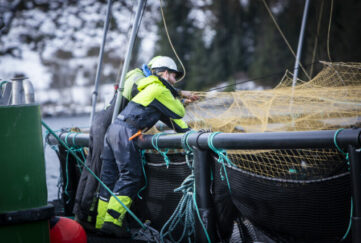Statt Torsk losses continue to rise despite revenue growth

Cod farmer Statt Torsk, which is merging with the whitefish producer Vesterålen Havbruk, has reported a more than fourfold increase in its third quarter turnover, but the company continues to be loss-making.
Revenues increased from NOK 3.2m (£235,000) a year ago to NOK 14.1m (just over £1m) this time.
This improvement did not, however, prevent the company posting heavy losses of around NOK 60.5m (£4.48m) during the quarter.
During the first nine months of this year, the company recorded a turnover of NOK 92.9m (£6.8m) with a “negative operating profit” or loss of NOK 79.5m (£5.8m).
The same period last year saw a turnover of NOK 12.2 (£900,000) with a negative operating profit of NOK 25.8m (£1.9m)
In September Statt Torsk and Vesterålen Havbruk entered into a transaction agreement for a merger. The final merger plan will become available later this month.
Statt Torsk disclosed in August that it had been affected by high mortalities and production costs during the second quarter which have cost the business almost £1m.
An Oslo Stock Exchange announcement this week said: “Central to Statt Torsk is to reduce all slaughter and handling costs, especially in the phase where the company is now, where the ongoing volume to be slaughtered is low.
“This has been solved through a collaboration with Ode AS (another cod farmer) , where the companies jointly slaughter fish with the aim of achieving a lower unit cost per kilo.
“From and including January 2024, this collaboration will achieve full effect, and costs for fish… will be reduced by 50%.”
The company also said it was reducing staff with eight people affected so far, but warned that further cuts may be on the way when final plans for the postponement and operation of the site next year are available.
The Norwegian Seafood Council said this week that the export volume of farmed cod is continuing to increase and accounted for 44% of total fresh cod exports last month.
In total, 890 tonnes of fresh whole farmed cod were exported in October, and was worth NOK 55 million (£4m) – more than double the volume and value of a year ago.
Some cod farmers may be struggling at the moment, but with large wild cod quota cuts coming next year, observers expect to see demand for their products rising, with probably higher prices, in 2024.

